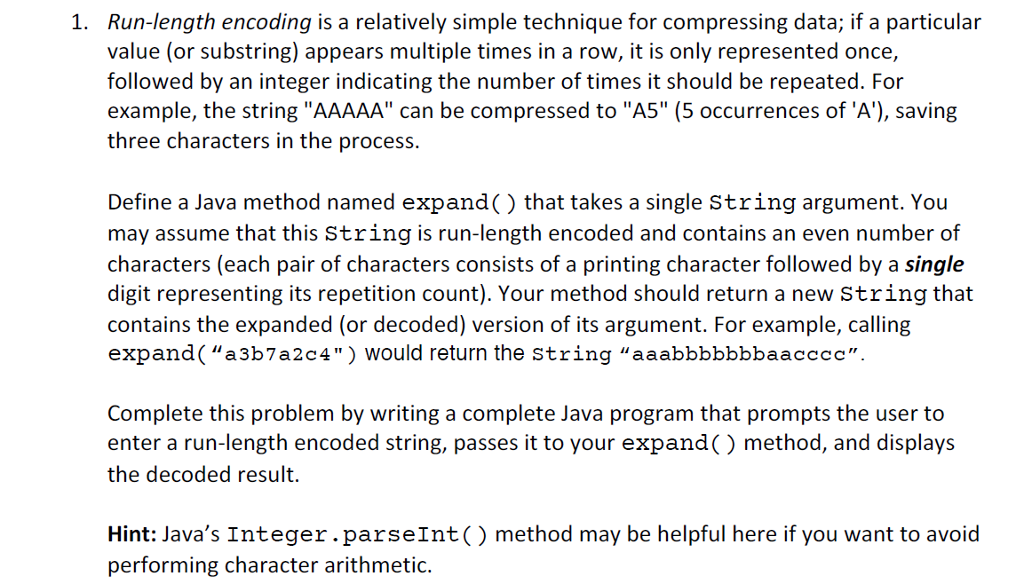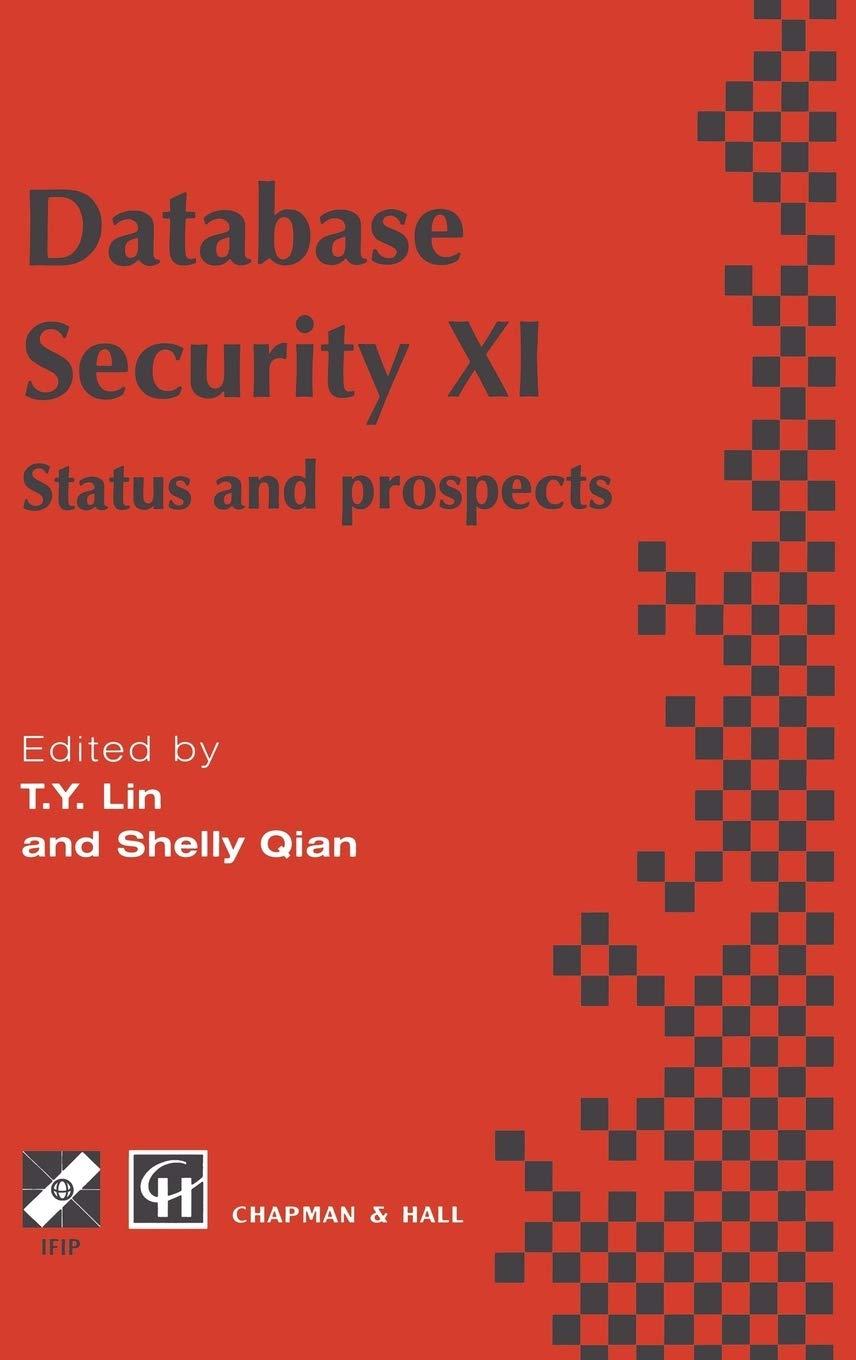Question
(use java) Run-length encoding is a relatively simple technique for compressing data; if a particular value (or substring) appears multiple times in a row, it
(use java)Run-length encoding is a relatively simple technique for compressing data; if a particular value (or substring) appears multiple times in a row, it is only represented once, followed by an integer indicating the number of times it should be repeated. For example, the string "AAAAA" can be compressed to "A5" (5 occurrences of 'A'), saving three characters in the process. Define a Java method named expand() that takes a single String argument. You may assume that this String is run-length encoded and contains an even number of characters (each pair of characters consists of a printing character followed by a single digit representing its repetition count). Your method should return a new String that contains the expanded (or decoded) version of its argument. For example, calling expand(a3b7a2c4") would return the String aaabbbbbbbaacccc. Complete this problem by writing a complete Java program that prompts the user to enter a run-length encoded string, passes it to your expand() method, and displays the decoded result. Hint: Javas Integer.parseInt() method may be helpful here if you want to avoid performing character arithmetic.
Step by Step Solution
There are 3 Steps involved in it
Step: 1

Get Instant Access to Expert-Tailored Solutions
See step-by-step solutions with expert insights and AI powered tools for academic success
Step: 2

Step: 3

Ace Your Homework with AI
Get the answers you need in no time with our AI-driven, step-by-step assistance
Get Started


